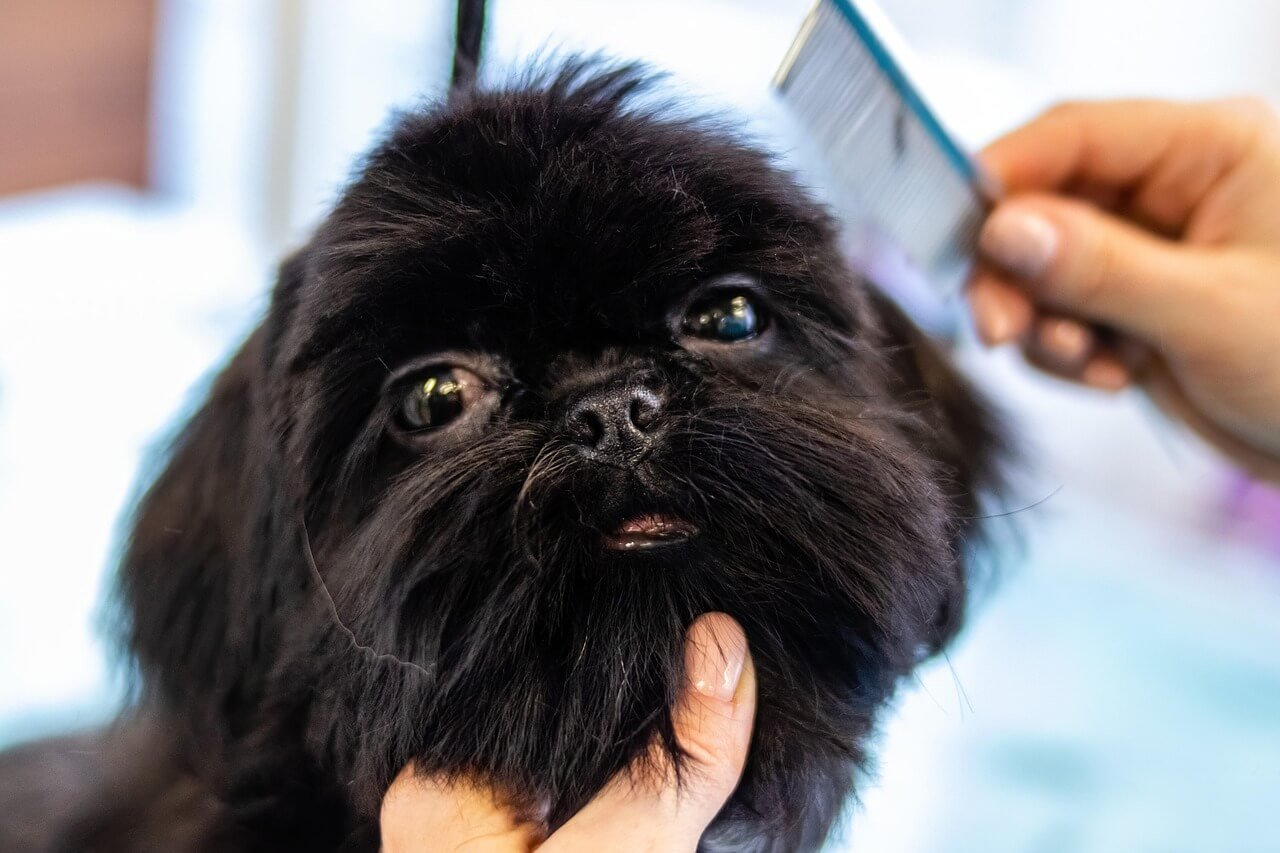The Ultimate Guide to Dog Grooming: Keeping Your Furry Friend Happy and Healthy
Dog grooming is more than just a luxury—it’s an essential part of responsible pet ownership. From maintaining a shiny coat to ensuring your dog’s overall health, grooming plays a vital role in their well-being. Whether you’re a first-time dog owner or a seasoned pet parent, understanding the basics of dog grooming can help you keep your furry companion looking and feeling their best. In this guide, we’ll explore everything you need to know about grooming your dog, from brushing techniques to nail care, and how to make the process enjoyable for both you and your pup.
Essential Tools for Effective Dog Grooming
Before diving into the grooming process, it’s important to have the right tools on hand. Investing in quality grooming supplies ensures the experience is comfortable and efficient for both you and your dog.
Brushes and Combs:
Different coat types require specific brushes—slicker brushes for long-haired breeds, bristle brushes for short coats, and de-shedding tools for double-coated dogs.Nail Clippers or Grinders:
Nail clippers are ideal for quick trims, while grinders provide smoother results and reduce the risk of cutting the quick.Shampoos and Conditioners:
Use dog-specific shampoos that cater to your pet’s skin type—whether they have sensitive skin, allergies, or a thick coat.Ear Cleaning Solutions:
A gentle ear cleaner helps prevent infections by removing dirt and wax buildup without irritating the delicate ear canal.Drying Towels and Dryers:
Absorbent towels and low-heat dryers are essential for drying your dog after baths, preventing discomfort or coldness.
Having these tools ready will streamline the grooming process and ensure your dog stays comfortable throughout.
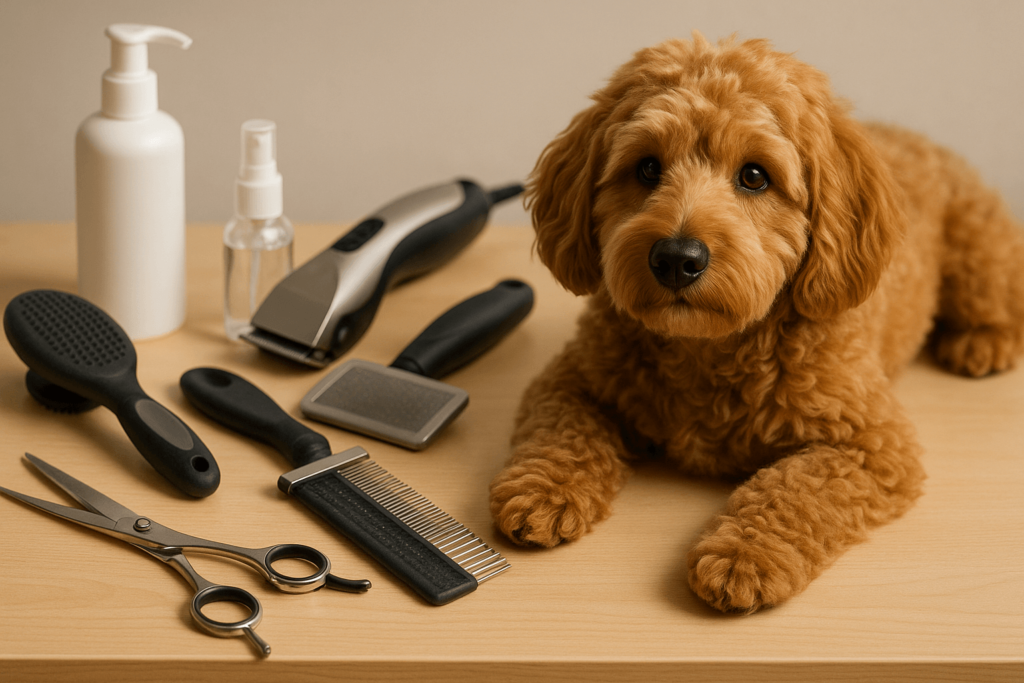
Step-by-Step Guide to Bathing Your Dog
Bathing is a key component of dog grooming, but it requires careful preparation to avoid stress or mishaps. Follow these steps to give your dog a spa-like experience at home.
Brush Before Bathing:
Remove tangles and loose fur before bathing to prevent matting when the coat gets wet.Use Lukewarm Water:
Ensure the water temperature is warm but not hot, as extreme temperatures can irritate your dog’s skin.Apply Shampoo Properly:
Start by massaging shampoo into your dog’s coat, avoiding sensitive areas like the eyes, ears, and nose.Rinse Thoroughly:
Leftover shampoo residue can cause skin irritation, so rinse until the water runs clear.Dry with Care:
Use a towel to blot excess water, then finish with a low-heat dryer to prevent overheating or discomfort.
By following these steps, you can ensure your dog’s bath is both effective and enjoyable.
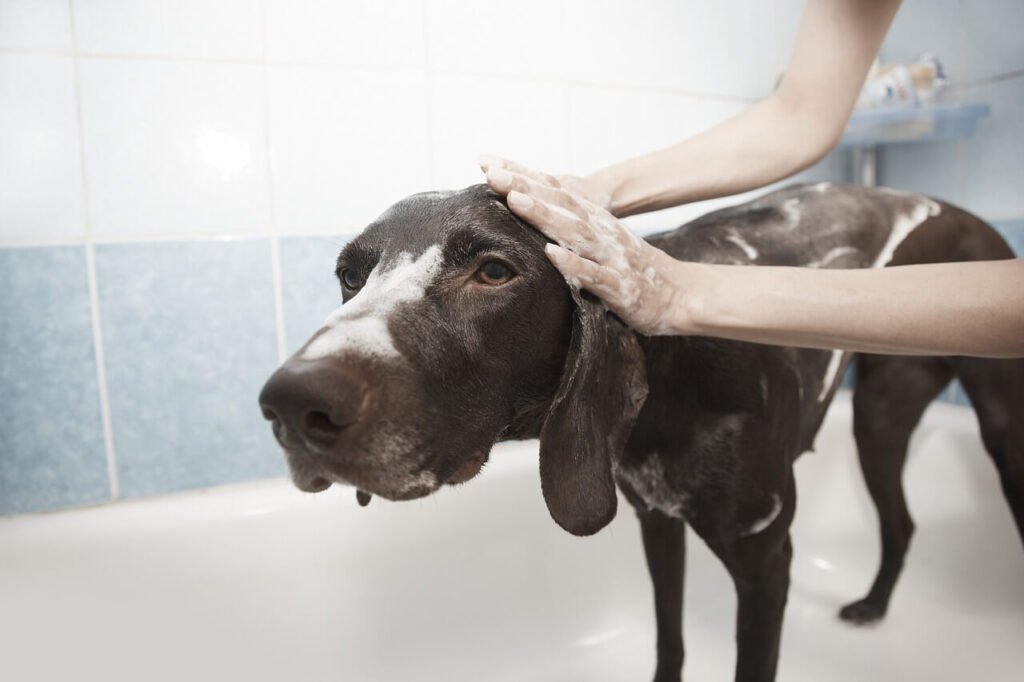
Check this guide 👉What Do Dog Groomers Do? Best 7 Expert Tips!
Check this guide 👉Dog Itchy Bum After Grooming: Best 7 Expert Tips!
Check this guide 👉How Often Should You Groom Your Dog? Best 7 Expert Tips!
Benefits of Regular Dog Grooming | Signs Your Dog Needs Grooming |
|---|---|
Reduces shedding and hair around the house | Excessive matting or tangling in the coat |
Prevents skin infections and irritations | Strong odor indicating poor hygiene |
Improves circulation through brushing | Overgrown nails affecting mobility |
Strengthens the bond between you and your dog | Visible dirt or debris in the coat |
Keeps ears and teeth clean and healthy | Unpleasant breath signaling dental issues |
Tips for Trimming Your Dog’s Nails Safely
Trimming your dog’s nails is an important yet often overlooked aspect of grooming. Proper nail care prevents discomfort and potential health issues.
Identify the Quick:
The quick is the pink area inside the nail containing nerves and blood vessels. Avoid cutting into it to prevent pain and bleeding.Choose the Right Tool:
Use dog-specific nail clippers or grinders designed for safety and precision.Trim Small Sections at a Time:
Cut only the tip of each nail to minimize the risk of hitting the quick.Reward Calm Behavior:
Offer treats and praise during and after the process to create positive associations.Consult a Professional if Unsure:
If you’re nervous about trimming your dog’s nails, seek help from a professional groomer or veterinarian.
With patience and practice, nail trimming can become a stress-free routine for both you and your dog.
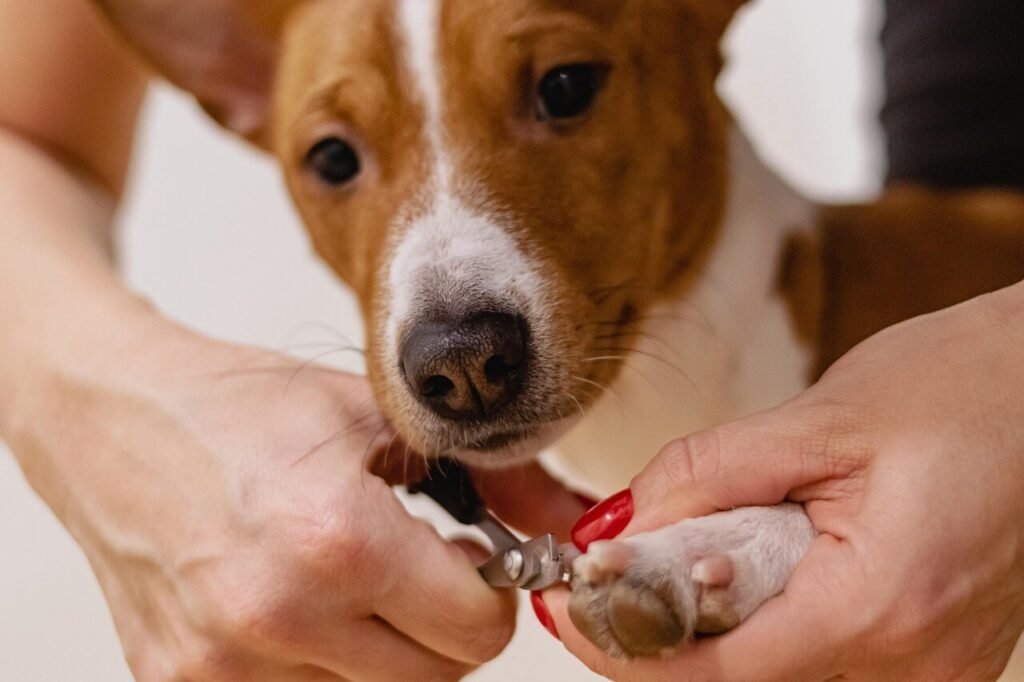
How to Brush Your Dog’s Coat Effectively
Regular brushing is crucial for maintaining a healthy coat and preventing tangles. Here’s how to do it properly based on your dog’s coat type.
Short-Haired Breeds:
Use a bristle brush to remove loose fur and distribute natural oils evenly across the coat.Long-Haired Breeds:
Opt for a slicker brush or comb to detangle knots and prevent matting.Double-Coated Breeds:
A de-shedding tool helps manage undercoat shedding during seasonal changes.Curly-Coated Breeds:
Use a wide-toothed comb to gently work through curls and prevent breakage.Focus on Problem Areas:
Pay extra attention to areas prone to matting, such as behind the ears, under the legs, and around the tail.
Consistent brushing keeps your dog’s coat shiny and reduces shedding around the home.
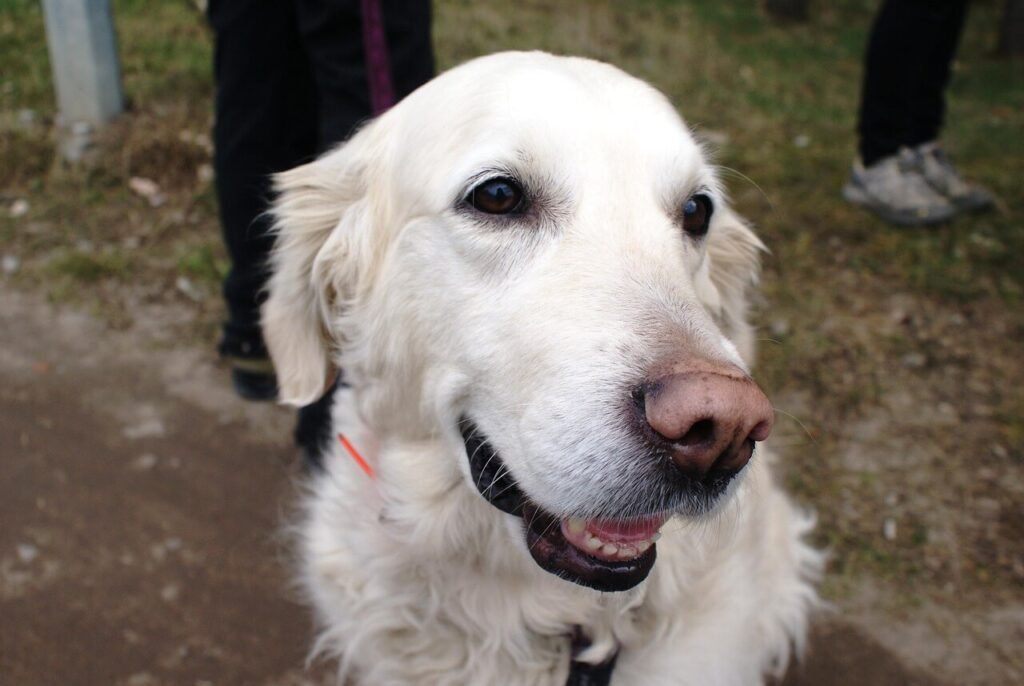
Common Grooming Mistakes to Avoid
Even experienced dog owners can make mistakes during grooming. Being aware of these pitfalls ensures a safer and more effective process.
Using Dull Tools:
Dull blades or clippers can tug at your dog’s fur, causing discomfort or injury. Always keep tools sharp and clean.Skipping Ear and Dental Care:
Neglecting these areas can lead to infections or bad breath. Incorporate ear cleaning and toothbrushing into your routine.Over-Bathing Your Dog:
Too many baths can strip their coat of natural oils, leading to dry, irritated skin. Stick to the recommended frequency.Ignoring Seasonal Needs:
Dogs with thick coats may need extra grooming during shedding seasons to prevent overheating.Forcing an Unwilling Dog:
Pushing a resistant dog too hard can create fear and anxiety. Take breaks and reward calm behavior.
Avoiding these mistakes ensures a smoother grooming experience for both you and your dog.

Benefits of Professional Dog Grooming
While at-home grooming is convenient, professional services offer unique advantages that can complement your efforts.
Expert Handling:
Professional groomers are trained to handle challenging behaviors and coat types with ease.Access to Specialized Tools:
Groomers use high-quality equipment that may not be practical for home use, such as hydrotherapy baths.Health Checks:
Groomers often spot early signs of skin issues, lumps, or other health concerns during sessions.Time-Saving Convenience:
Outsourcing grooming frees up your time while ensuring your dog receives thorough care.Customized Services:
Many groomers tailor their services to meet your dog’s specific needs, from breed-specific cuts to allergy-friendly products.
Professional grooming can be a valuable addition to your dog’s care regimen.
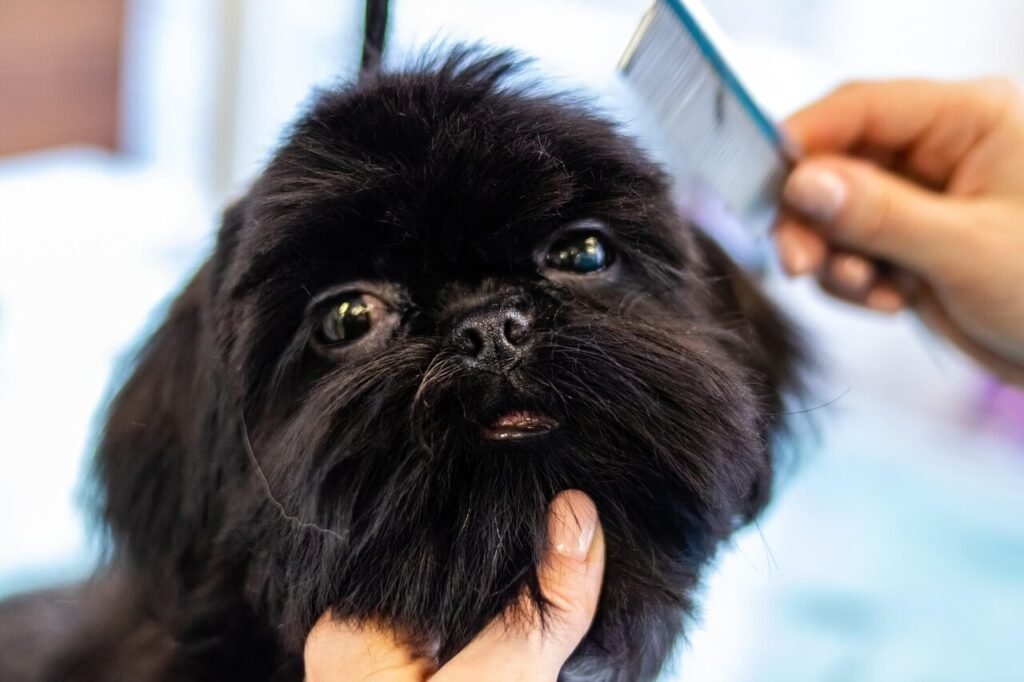
How to Introduce Your Dog to Grooming
If your dog is new to grooming, introducing them gradually can help them adjust and enjoy the process.
Start Early:
Begin grooming routines when your dog is young to establish familiarity and trust.Create Positive Associations:
Reward your dog with treats or toys during grooming sessions to reinforce good behavior.Keep Sessions Short:
Limit initial sessions to a few minutes to prevent overwhelming your dog.Practice Handling Their Paws and Ears:
Touching these sensitive areas regularly helps them get used to being handled during grooming.Be Patient and Consistent:
Building trust takes time, so remain patient and celebrate small victories along the way.
With consistent effort, your dog will learn to see grooming as a positive and bonding experience.

Frequently Asked Questions About Dog Grooming
How often should I groom my dog?
It depends on your dog’s breed and coat type, but most dogs benefit from grooming every 4-6 weeks.
Can I use human shampoo on my dog?
No, human shampoos can irritate your dog’s skin. Always use products designed for dogs.
What should I do if my dog hates grooming?
Start with short, positive sessions and reward them with treats to build trust.
Is professional grooming worth the cost?
Yes, especially for complex tasks like haircuts or de-shedding treatments that require expertise.
How can I prevent my dog’s nails from cracking?
Trim them regularly and ensure they’re not too short. Using a nail file can also help smooth rough edges.
Building a Consistent Grooming Routine for Your Dog
Dog grooming is an essential responsibility that promotes your pet’s physical health and emotional well-being. By understanding the tools, techniques, and benefits of grooming, you can create a routine that keeps your dog happy and healthy. Remember, consistency is key—regular grooming sessions not only maintain your dog’s appearance but also strengthen the bond between you and your furry friend. With patience and care, you’ll find that grooming becomes a rewarding part of your shared life together.
Cat Fever Treatment: Best 7 Expert Tips! Discover expert advice on identifying, managing, and treating fever in cats to ensure their quick recovery and well-being.
Understanding Meloxicam for Cats: Best 7 Expert Tips! Learn how to safely administer meloxicam, manage side effects, and ensure your cat's comfort with expert advice on feline pain relief.
Amoxicillin for Cat UTI: Best 7 Expert Tips! Discover safe usage, dosage guidelines, and expert advice on treating feline urinary tract infections effectively with amoxicillin.
Understanding Cat Cancer Treatment: Best 7 Expert Tips! Discover expert advice on managing feline cancer, from early detection to treatment options, ensuring your cat’s health and comfort.

